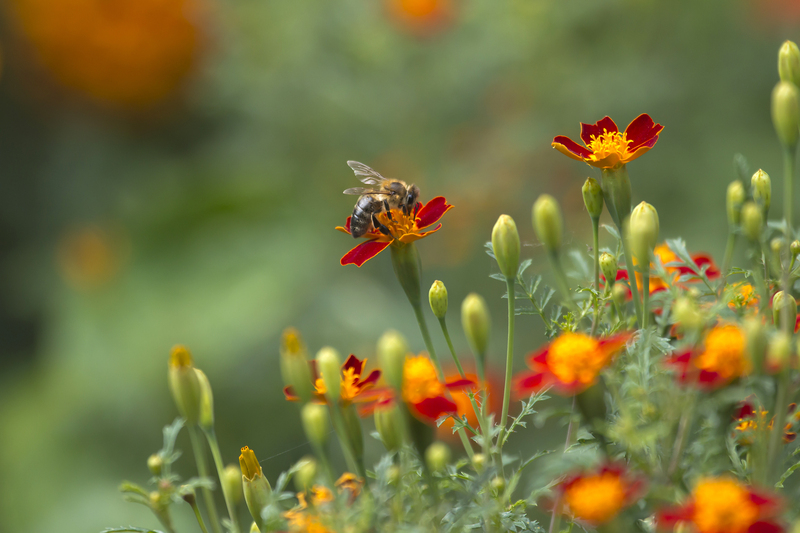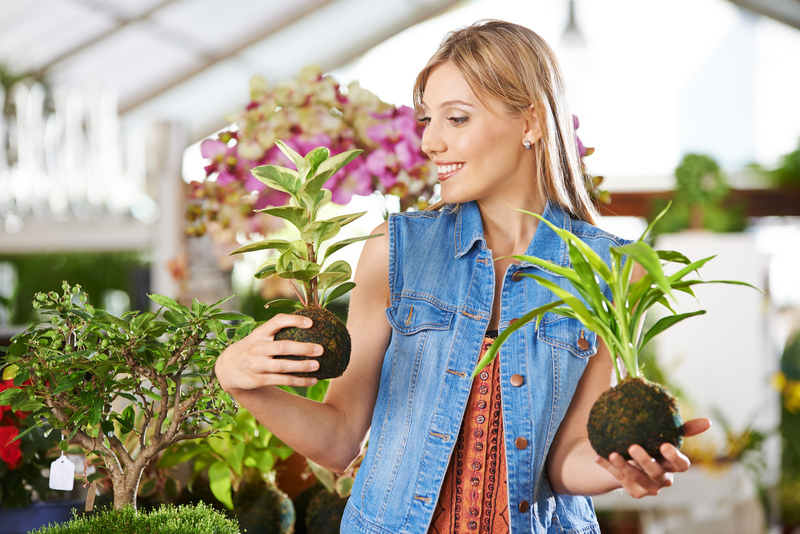Container gardening tips for beginners
Posted on 06/09/2025
Container Gardening Tips for Beginners: A Complete Guide
Are you interested in starting a garden, but have limited space? Container gardening is the perfect solution for beginners and seasoned gardeners alike. This comprehensive article provides container gardening tips for beginners and helps you create a thriving garden in even the smallest of spaces.

What is Container Gardening?
Container gardening is a method of growing plants exclusively in containers rather than in the ground. This approach is ideal for people living in apartments, houses with small yards, or anyone looking to beautify patios, balconies, and indoor spaces. Container gardening not only saves space but also offers flexibility, control over soil, and portability.
Benefits of Container Gardening
- Space-efficient: Perfect for small areas such as balconies, patios, and windowsills.
- Portable: Easily move your plants to catch the sun, avoid bad weather, or redesign your space.
- Control: Full control over soil quality, moisture, and nutrients.
- Pest management: Effortlessly isolate or treat plants with pests or diseases.
- Creativity: Wide variety of containers and arrangements to suit your style.
In addition, container gardens allow you to grow a wide variety of plants, from lush flowers and foliage to delicious fruits, vegetables, and herbs.
Essential Container Garden Tips for Beginners
Starting a container garden can feel overwhelming. But with the right advice, tools, and a little patience, anyone can cultivate a successful potted paradise. Here are essential tips for those just starting out:
1. Choose the Right Containers
Selecting the appropriate container is crucial. Consider the following when making your choice:
- Size Matters: Ensure your container is large enough for your plant's root system. As a rule, vegetables and larger plants require pots at least 12-18 inches in diameter.
- Material: Plastic pots retain moisture well and are lightweight, while clay and ceramic pots provide stability but may dry out faster.
- Drainage: Always use containers with good drainage holes. Plants left in standing water develop root rot.
- Recycled Options: Get creative! Buckets, crates, and even old boots can be transformed into charming planters (just add drainage holes).
2. Use High-Quality Potting Mix
Garden soil is too heavy for containers, so opt for a lightweight, nutrient-rich potting mix. These commercial mixes are designed for proper aeration, water retention, and root growth. For container gardening beginners, this is a must!
- Enhance Soil: Add compost or slow-release fertilizers for extra nutrients.
- Avoid Soil Compaction: Never reuse potting soil for long periods as it compacts and loses nutrients.
3. Pick Suitable Plants for Your Space
Consider your location's light, temperature, and space when choosing plants for your container garden. Here are some easy options for beginners:
- Herbs: Basil, parsley, mint, and chives thrive in pots.
- Vegetables: Tomatoes, lettuce, peppers, radishes, and spinach are container-friendly.
- Flowers: Petunias, pansies, geraniums, and marigolds add vibrant color.
- Succulents: Require little water and minimal care.
Start small. It's easier to manage a handful of plants and expand as you gain confidence.
4. Understand Your Lighting Conditions
Different plants require different amounts of sunlight. Make note of how much sun your space receives:
- Full Sun: 6+ hours of bright, direct sunlight daily.
- Partial Sun/Partial Shade: 3-6 hours of direct sunlight.
- Shade: Less than 3 hours of direct sunlight.
Most vegetables and sun-loving flowers need full sun. Leafy greens and some herbs can thrive in partial shade.
5. Water Wisely
One of the most common mistakes container gardening beginners make is improper watering. Follow these tips:
- Check Moisture: Stick your finger an inch into the soil; water if it feels dry.
- Be Consistent: Containers dry out faster than garden beds. In summer, you may need to water daily.
- Water Deeply: Ensure water reaches the root zone and excess drains out the bottom.
- Avoid Splashing Leaves: Wet foliage invites disease.
Invest in self-watering pots or watering stakes for consistent moisture.
6. Feed Your Plants Regularly
Container plants rely entirely on you for nutrition. Fertilize regularly with:
- Slow-Release Fertilizer: Mix into soil before planting.
- Liquid Fertilizer: Apply every 2-4 weeks during the growing season.
- Compost Tea: Natural and effective for organic gardening.
*Always follow the instructions on your fertilizer's packaging to avoid overfeeding.*
7. Provide Adequate Drainage
Drainage is critical for thriving container plants. Ensure:
- The container has one or more holes at the base.
- You use a saucer or tray to catch excess water (but never let the plant sit in water).
- Larger pots need more holes for proper drainage.
If needed, add a layer of stones or broken pot shards at the bottom of the container to improve drainage, but a free-flowing hole is vital.
8. Group Plants With Similar Needs
When arranging containers or planting multiple varieties in one pot, group plants by similar water, sun, and soil requirements. This makes watering and care much easier--and keeps your plants healthy.
Choosing the Best Plants for Container Gardening
Choosing the right plants will set your container garden up for success. Here are a few beginner-friendly selections:
- Leafy greens: Lettuce, spinach, arugula, and kale.
- Herbs: Basil, thyme, oregano, rosemary, cilantro, mint, chives.
- Compact vegetables: Cherry tomatoes, peppers, bush beans, radishes, carrots (Choose short varieties).
- Dwarf fruit trees: Lemon, fig, or apple trees bred for containers (require larger pots).
- Edible flowers: Nasturtiums, violas, pansies (add beauty and interest).
Tip: Always check the plant label for variety and space requirements. Dwarf, bush, and "container" varieties are best.
Creative Container Gardening Design Ideas
Container gardening inspires creativity. Combine form and function with these design tips:
- Thriller, Filler, Spiller Technique: In large pots, include a tall focal plant (thriller), bushy medium-height plants (fillers), and trailing varieties along edges (spillers).
- Color Coordination: Match or contrast flower and leaf colors for visual interest.
- Mix Textures: Combine delicate foliage with bold, upright plants.
- Vertical Arrangements: Use shelves, hanging baskets, or trellises to add height and maximize space.
- Recycled and Upcycled Containers: Old watering cans, baskets, crates, or teapots can become unique planters.
Common Challenges and Solutions in Container Gardening
Dealing With Pests and Diseases
Pests and diseases can target any garden. However, container gardening allows easier control:
- Inspect Regularly: Check under leaves for insects or discoloration.
- Isolate New Plants: Keep recently purchased plants separate for a week.
- Natural Remedies: Neem oil and insecticidal soap work well for common pests.
- Proper Spacing: Keeps air circulating, reducing fungal issues.
- Clean Tools: Always use clean pots and tools to prevent disease spread.
Managing Water and Drainage Issues
Too much or too little water can harm your plants. Ensure your potting mix drains well and your containers have proper holes. If plants yellow or wilt, inspect the soil's moisture and drainage immediately.
Addressing Nutrient Deficiencies
Yellowing leaves or slow growth might signal lack of nutrients. Regularly feed your plants and replace old soil every year. Container gardening beginners should monitor plant performance and adjust feeding schedules as necessary.
Seasonal Container Gardening Tips
Containers offer year-round beauty and productivity. Here's how to maintain your garden through the seasons:
- Spring: Plant cool-season crops like lettuce, spinach, and pansies.
- Summer: Switch to heat-loving vegetables and flowers. Water more frequently.
- Fall: Plant autumn flowers (mums, asters) and greens such as kale.
- Winter: Bring tender plants indoors or use frost cloths. Hardy evergreens and ornamental cabbages provide winter interest.
Container Garden Maintenance and Upkeep
Maintain a vibrant container garden with these simple tasks:
- Deadhead flowers: Remove spent blooms to encourage new growth.
- Trim browning leaves: This keeps plants looking tidy and healthy.
- Rotate plants: Turn containers for even sunlight exposure.
- Re-pot: Transplant root-bound plants to larger containers annually.
- Refresh soil: Change potting mix yearly to replenish nutrients and prevent compaction.

FAQs: Quick Answers to Container Gardening for Beginners
How often should I water my container plants?
Water when the top inch of soil feels dry. Frequency depends on weather, container size, and plant type--some may need daily watering during hot periods.
What size container is best?
Match the pot size to the mature size of your plant. Generally, 12-18 inch pots suit most vegetables and flowers.
Can I grow vegetables in containers?
Absolutely. Choose dwarf or compact varieties for best results. Tomatoes, lettuce, carrots, and peppers are great choices for new container gardeners.
Do I need to feed my container plants?
Yes, since nutrients are limited in pots, regular fertilizing is required for healthy plants.
Can I reuse old potting mix?
You can refresh it by mixing in new potting soil and compost, but avoid using it for plants prone to disease or after more than two seasons.
Conclusion: Start Your Container Garden Journey Today!
Container gardening is an accessible, flexible, and creative way for anyone to grow beautiful plants and even fresh produce. Whether you have a balcony or a sunny windowsill, these container gardening tips for beginners will help you succeed.
Remember to select the right containers, use high-quality potting mix, pay attention to water and sunlight, and provide regular care. Experiment with different plant varieties and arrangements to find what suits your space and style. With a little effort and creativity, your container garden will thrive--and so will your love for gardening!
Ready to transform your space with container gardening? Start today using these expert tips and enjoy the beauty and bounty of your new potted paradise!

